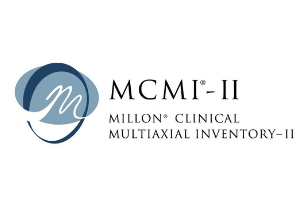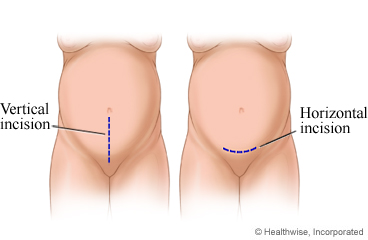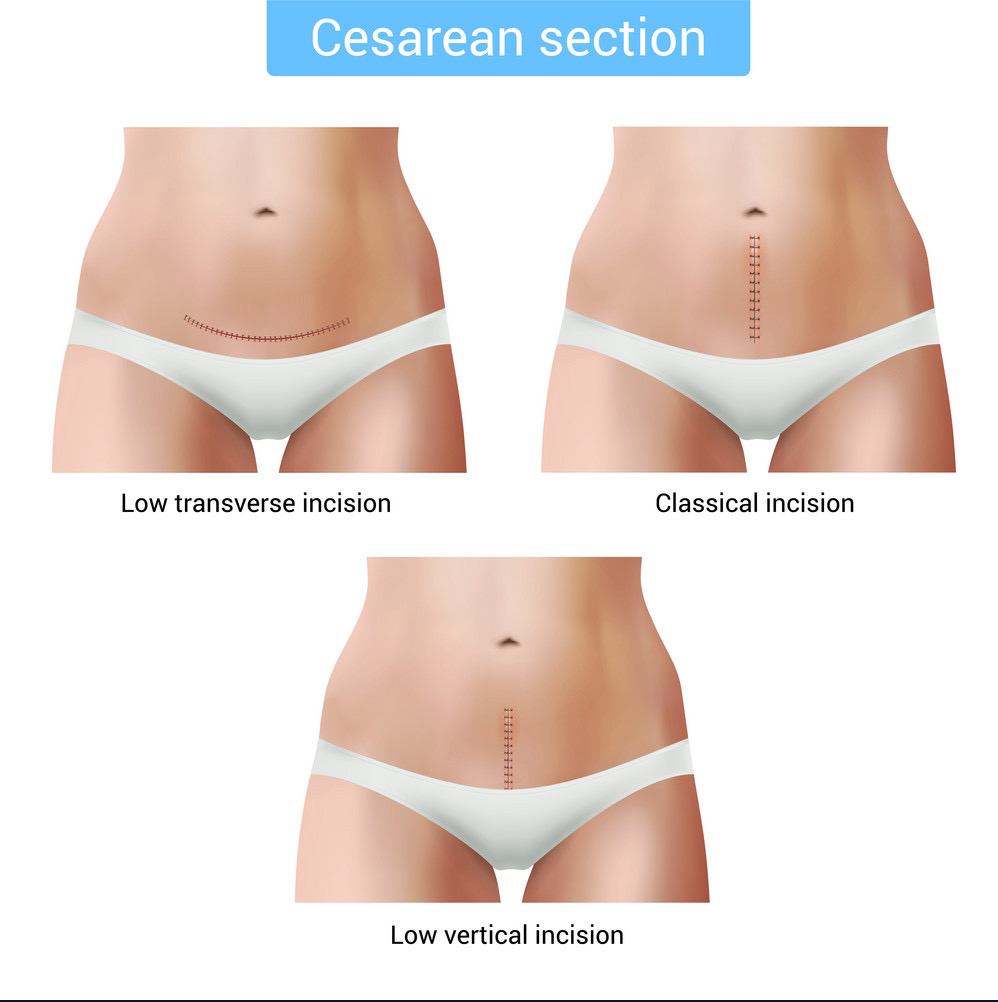(TPP2502039 9-1 Final Project Submission: Assessment Analysis)
Student’s Name
Institution
Course Name and Number
Professor’s Name
Assignment Due Date

9-1 Final Project Submission: Assessment Analysis
The chosen vignette involves a 33-year-old single Caucasia female, code-named Ms. G. Ms. G is present to assess and elucidate her diagnosis issues and plan for her vocational and educational goals. Ms G has congenital spina bifida. She uses a wheelchair for ambulation and has no developmental concerns. She did not receive a tailored individualized education plan (IEP) or special education. During college, she had a leave of absence after two years of study, which was challenging. She wants guidance on continuing her studies, considering she struggles academically and does not fit in with her peers. She has been on and off counseling for her mental health issues. She is taking Zoloft and Xanax to manage her anxiety and depression. She reports general anxiety and depression but has experienced three severe occasions of depression. She fears vomiting and is concerned with her inability to secure employment, for which she feels helpless. She does not know why she has been losing friends. She needs support with her psychological status, i.e., depression, anxiety, and social concerns. This essay aims to research and understand the Wechsler Adult Intelligence Scale and Millon Clinical Multiaxial Inventory tests concerning the client’s case and determine their significance in understanding the client. (TPP2502039 9-1 Final Project Submission: Assessment Analysis)
Test and Assessment Development Analysis
Test One
Administered
WAIS-IV is a self-administered and norm-reference test, such that it can be scored with software or manually and takes 60-90 minutes to score.
Population
WAIS-IV is commonly used as a normed-referenced test for a comprehensive intelligence assessment in older adolescents and adults aged 16 to 90, 11 months (Valentine et al., 2020). Variations of this test, the Wechsler Intelligence Scale for Children aged 6-16 and the Wechsler Preschool and Primary Scale of Intelligence for children between three months old to 7 years, are used for individuals below 16 years.
Yields
Index scores include working memory, perceptual reasoning, verbal comprehension, and processing speed. WAIS-IV determines a person’s cognitive or intellectual ability, yielding scores that indicate the presence or absence of an intellectual disability. (TPP2502039 9-1 Final Project Submission: Assessment Analysis)
Validity and Reliability
WAIS-IV has strong validity and reliability scores. In preliminary tests, WAIS-IV has a high consistency with a test re-test reliability that ranges between 0.7 to 0.9 in subscales, and inter-scorer coefficients are high, >.90 (Valentine et al., 2020). The reliability scores for full-scale IQ range from .94 to .98, while primary index scores range from .94 to .96 (Valentine et al., 2020). The test re-test scores are strong for full-scale IQ, .96, and primary indexes scores range from .87 to .96. These ratings have been corroborated in various studies and populations. The reliability score for full-scale IQ measurements based on a standardized sample is .98, which suggests good internal consistency (Drozdick et al., 2018). In addition, Drozdick et al. (2018) established a test re-test reliability score of .96 with a 22-day mean interval. Therefore, WAIS-IV provides robust evidence when measuring general intelligence based on mixed clinical and non-clinical samples.
Cut Scores
The WAIS-IV measures five aspects of intelligence, Full Scale IQ (FSIQ), Verbal Comprehension Index (VCI), Perceptual Reasoning Index (PRI), Working Memory Index (WMI), and Processing Speed Index (PSI). These indexes are designed to have a mean score of 100 and 15 IQ points as standard deviation. A 100 IQ defines an average adult’s performance at that age. Most adults (2/3) have an IQ of 85 to 115 (Arizona Forensics, 2022). Approximately 95 percent score between 70 and 130 and 99 percent between 55 and 145. Normal scores on the scale range between 90 to 110, at-risk scores between 70 and 89, and clinically significant scores below 69. (TPP2502039 9-1 Final Project Submission: Assessment Analysis)
The diagnostic labels and associated numerical limits regarding IQs and percentages are:
| IQ |
Classification |
| 130 and above |
Very Superior |
| 120-129 |
Superior |
| 110-119 |
High Average |
| 90-109 |
Average |
| 80-89 |
Low Average |
| 70-79 |
Borderline |
| 69 and below |
Mentally Retarded |
The following are the corresponding scores for the patient:
| Index |
Score |
Classification |
| FSIQ |
94 |
Average |
| WMI |
108 |
Average |
| PSI |
81 |
Low average |
| PRI |
82 |
Low Average |
| GAI |
95 |
Average |
| VCI |
107 |
Average |
Cultural Concerns
Cultural factors like language barriers may significantly affect the administration of the WAIS-IV test. For example, language differences among equally intelligent respondents may result in variations in mean scores on each item, producing biased results (Duggan et al., 2019). In addition, the respondents may poorly translate the items or be unfamiliar with them, or the original items may be ambiguous, causing biases. Besides, behavioral differences across cultures may also affect the tests. For example, western cultures believe intelligent people have skilled reasoning, while African cultures (Kenya) believe that appropriately dressed and behaved children are intelligent.
Ethical Issues
Low reliability among individuals with an IQ below 50, cultural bias, and poor scores for culturally deprived children are among the ethical issues linked to using WAIS-IV. Other ethical concerns include the forceful administration of the tests to unwilling individuals, which may increase the test results’ bias. Autonomy is an important ethical principle in disease evaluation, diagnosis, and treatment, and no patient should be coerced into forceful test administration. Most patients suspect and are ambivalent towards psychological tests, and the physician should take patient preferences, needs, culture, and beliefs into perspective. For example, some schools can administer the tests without the children’s or their parent’s consent. Besides, Goldstein, Allen, and DeLuca (2019) observe that poor translations may result in discrepancies distorting the final intelligence measures, hence the need for extreme caution when using results based on translated items. These ethical considerations should be addressed during the assessment and results interpretation. (TPP2502039 9-1 Final Project Submission: Assessment Analysis)
Methods
Practitioners should extract accurate information from their assessment, develop inferences from patient data, and accurately and appropriately communicate the information to the patient to make understanding and interpretation easier. Interpretation and communication of the test results should incorporate competency, theory, and clinical skills (Goldstein, Allen & DeLuca, 2019). The interpreters should clearly outline any discrepancies between the profiles of different participants while comparing them with matched controls. Standard error of measurement linked to confidence should also be a factor when communicating assessment results to help the patient understand the results and test results’ limitations. The comparison group selected to assess performance and the associated standardized test scores should be communicated to the client. (TPP2502039 9-1 Final Project Submission: Assessment Analysis)
Test Two
Administered
The Millon Clinical Multiaxial Inventory (MCMI – III) was the second test administered. MCMI-III is typically administered and scored by mental health personnel. False versions can be taken manually, computer, or online and reviewed by a licensed mental health professional. MCMI-III takes 25 to 30 minutes to complete. MCMI-III is a self-report measure for psychopathology associated with personality disorders and associated clinical symptoms (Andrews & Bender, 2020).
Population
MCMI-III is designed for adults ages >18 years in outpatient or inpatient clinical settings or inmate correctional settings with at least an eighth-grade reading level (Andrews & Bender, 2020).
Yields
MCMI-III provides a comprehensive assessment of diagnostic and treatment data for mental health personnel for individuals with personality disorders and associated clinical syndromes (Andrews & Bender, 2020). It comprises three validity scales, ten basic personality scales, three severe personality scales, six clinical syndrome scales, and three severe clinical syndrome scales (Alareqe et al., 2021). Depending on the classification on the scale, an assessment might indicate personality disorder or Clinical Syndrome. (TPP2502039 9-1 Final Project Submission: Assessment Analysis)
Reliability and Validity
Besides, the MCMI-III provides mental health personnel with a client’s emotional and interpersonal insight (Andrews & Bender, 2020). Therefore, MCMI-III can substantiate clinical diagnoses based on a client’s historical data and mental status examination and guide the mental health personnel on treatment recommendations. MCMI-III has strong validity and reliability. According to a study by Alareqe et al. (2021), MCMI-III has reliability ranging from .84 on the anxiety scale and .96 on the somatoform scale. Moreover, the stability of the median coefficient was established at .91, suggesting higher stability of MCMI-III in short periods (Alareqe et al., 2021). The study established an overall internal consistency of .83, scoring .78 for the masochistic personality disorder to .87 for histrionic personality disorder and compulsive personality disorder. For the three severe personality disorders, the test acquired an overall reliability of .84, ranging from .71 to .83 for schizotypal personality disorder and paranoid personality disorder, respectively (Alareqe et al., 2021). It had an overall reliability score of .91 for the three clinical syndromes, ranging from .84 to .70 for thought disorder to .86 for delusional disorder. (TPP2502039 9-1 Final Project Submission: Assessment Analysis)
Cut Scores
MCMI-III identifies symptom disorders and personality disorders. It comprises three validity scales, ten basic personality scales, three severe personality scales, six clinical syndrome scales, and three severe clinical syndrome scales (Alareqe et al., 2021). The test uses base rate scores, critical values ranging between 75 and 85. A value of 75 shows a problematic personality trait, but the presence of the disorder is considered secondary. A base rate of 85 or higher indicates a personality disorder presence. Similar values on the symptoms scale indicate that the disorder is severe or significant. A base rate of 60 represents the median score. The lowest possible BR score is 0, and the highest is 115. The cut scores for the Millon Clinical Multiaxial Inventory (MCMI – III) scale produced a mean score of 60, with normal scores averaging 60-74. High-risk scores averaged between 75-84, while scores between 85-115 were clinically significant. (TPP2502039 9-1 Final Project Submission: Assessment Analysis)
The corresponding results for the patient are:
| Schizoid |
81 |
Critical/Average |
| Depressive |
75 |
Critical/Average |
| Anxiety |
85 |
Prominent |
| Major depressive |
79 |
Critical/Average |
| Masochistic |
80 |
Critical/Average |
| Desirability |
75 |
Critical/Average |
Cultural Concerns
Differences in languages and translations in distinguishing personality disorders may affect the reliability and administration of the tests (Goldstein, Allen & DeLuca, 2019). Errors are likely to occur when translating the original items of MCMI-III, causing varying understandings of the identified disorders across cultures. Also, social norms influence interpersonal functioning, which is crucial in diagnosing borderline personality disorders (Kramer, Bernstein & Phares, 2019). Failure to consider the interpersonal traits of the individuals taking the test may produce biased results. (TPP2502039 9-1 Final Project Submission: Assessment Analysis)
Ethical Issues
Kramer, Bernstein, and Phares (2019) observe that ethical issues may include administering the test to individuals who do not require them, resulting in harmful labeling of clients, especially when sharing the test results with them. Besides, some test administrators may ignore confidentiality and privacy limits and share the tests with third parties (Kramer, Bernstein & Phares, 2019). Also, there can be concerns related to the incompetency of the administrators, whereby some of them may not use the tests for recommended purposes, like measuring the stable traits of the patient.
Methods
The test administrators should be competent and employ actuarial and clinical judgment when interpreting and communicating the tests (Kramer, Bernstein & Phares, 2019). They must use appropriate standards to ensure that the produced tests are valid and reliable. The interpretation of the MCMI-III assessment information is based on base rate (BR) scores, with 60 being the median score, zero being the lowest possible score, 75-84 the critical level, and 85-115 the significant score. The practitioner should determine whether points above the waterline indicate a disorder, stressors, or symptoms affected by multiple issues under the waterline. The communication should be culturally sensitive and avoid any form of cultural bias. The patient should be involved throughout the assessment to enhance understanding and interpretation of the results. The practitioner should provide the patient with an appropriate handout to take with them for continued processing. (TPP2502039 9-1 Final Project Submission: Assessment Analysis)
Clinical Formulation
Results
- WAIS-IV Scales
| Index |
Score |
Classification |
| FSIQ |
94 |
Average |
| WMI |
108 |
Average |
| PSI |
81 |
Low average |
| PRI |
82 |
Low Average |
| GAI |
95 |
Average |
| VCI |
107 |
Average |
Based on the WAIS-IV scales, the patient scored 94 on the Full-Scale IQ (FSIQ). A score of 94 is within the average range of most human beings, indicating that the patient can effectively solve problems, manage situations, and employ abstract thinking in making decisions. The patient scores for PSI (81) and PRI (82) were low average, indicating problems with the formation of nonverbal concepts, visual perception and organization, learning, visual-motor coordination, and visual stimuli and issues processing simple and routine visual materials without errors (Goldstein, Allen & DeLuca, 2019). However, the problems are insignificant and cannot be interpreted as an intellectual disability. In addition, the patient had average scores in Working memory Index (WMI) (108), GAI (95), and VCI (107), indicating typical or a normal person’s ability to sustain attention, concentration, apply mental control, measure verbal reasoning and concept development. (TPP2502039 9-1 Final Project Submission: Assessment Analysis)
- MCMI-III Scales
| Schizoid |
81 |
Critical/Average |
| Depressive |
75 |
Critical/Average |
| Anxiety |
85 |
Prominent |
| Major depressive |
79 |
Critical/Average |
| Masochistic |
80 |
Critical/Average |
| Desirability |
75 |
Critical/Average |
Consequently, based on the MCMI-III scales, the patient scored 75 on depressive, 85 on anxiety, 81 on schizoid, and 79 on major depression. Other scores include 81 (dependent), 80 (masochistic), and 75 (desirability). These scores indicate higher levels of personality disorders. A value of 75 shows a problematic personality trait, but the presence of the disorder is considered secondary. Values between 85-115 indicate the presence of a disorder. In this case, the patient might have a problematic personality trait or symptoms associated with depression, schizoid, major depression, masochism, and desirability. The patient’s scores indicate she is positive on the anxiety scale and suffers from anxiety disorders.
Diagnosis
Based on the WAIS-IV scales, the patient has problems forming nonverbal concepts, visual perception, organization, learning, visual-motor coordination, visual stimuli, and processing simple and routine visual materials without error. However, the scores are above the median score, indicating that the problems are not significant and can be found in an average human being; hence do not indicate the presence of a disorder. However, these symptoms might show that a personality disorder is secondary. Most scores in MCMI-III scales are average, therefore, not implying the presence of a disorder but problematic personality traits or symptoms associated with a disorder. The score on the anxiety scale is 85, indicating the presence of anxiety disorders, promoting further assessment and testing to establish the exact anxiety disorder. (TPP2502039 9-1 Final Project Submission: Assessment Analysis)
Psychometric Data
The results indicate the patient has problems with the formation of nonverbal concepts, visual perception and organization, learning, visual-motor coordination, and visual stimuli and issues processing simple and routine visual materials without error, which do not necessarily indicate the presence of a cognitive disorder but might indicate problems associated with intellectual disability. The confirmed diagnosis is an anxiety disorder. There are multiple anxiety disorders, prompting further assessment to determine the accurate diagnosis of anxiety disorder. Tools such as GAD-7 can be used. The presence of anxiety disorders justifies the referral for further assessment to develop an accurate diagnosis and a proper treatment plan for the patient.
Recommendations
Treatment
The client is indicated as experiencing symptoms associated with intellectual disability but not indicating the presence of a disorder. However, the assessment indicates that the client is experiencing an anxiety disorder. The appropriate step after this analysis is to refer the patient for further assessments to develop an accurate diagnosis and proper treatment plan, which is critical in managing anxiety disorders. Anxiety disorders are linked to a significant burden of illness. Multiple secondary symptoms presented by the patient might be signs of the confirmed disorder or other secondary disorders that can co-occur with anxiety disorders. DMS-5 and ICD-10 classification will help with the accurate diagnosis of the disorder following their criteria of symptomology indicating the presence of anxiety disorder. A correct diagnosis of the disorder will help develop a treatment and management plan that includes a combination of psychological therapy and pharmacotherapy (Bandelow et al., 2018). Cognitive behavioral therapy is the primary therapy recommended for this patient because it has the highest level of evidence (Bandelow et al., 2018). In addition, changing thinking and behavior patterns will help the patient manage anxiety-related challenges. (TPP2502039 9-1 Final Project Submission: Assessment Analysis)
Impact
Both pharmacological and non-pharmacological interventions and approaches have ethical implications. Ethical concerns associated with exposure to these interventions include fear of symptom worsening, client safety issues, boundary lines between patients and practitioners, and a high treatment dropout rate (Marks et al., 2021). In addition, Nonmaleficence, respect for persons, confidentiality, and veracity are concerns during treatment. Applying these principles can help the practitioner navigate successfully through the treatment and management process despite many uncertainties associated with treating mental health disorders (Marks et al., 2021), particularly dealing with anxious patients. The treatment must be delivered within this ethical framework to obtain desirable outcomes.
Results
The primary purpose of communicating the results is to let the patient know their mental health state, what disorder they are experiencing, and to help them understand the circumstances or options surrounding the disorder. The presentation of results should be in a format and language that the patient can easily understand (Washington Medical Commission, 2022). It should be done in a timely manner, either in writing, by telephone, in person, or electronically. For an initial diagnosis, in-person communication is the most effective, but the practitioner should ask the patient how they would like to hear the results. It is also important to understand the patient’s mental state and ensure they are comfortable. The practitioner should consider a culturally sensitive format, avoid bias, and demonstrate empathy. Most importantly, the practitioner should document everything and share additional resources with the patient.
Limitations
The results of the assessment necessitate further assessments to develop a correct diagnosis. Various limitations are linked to the assessment and data analysis, including the time needed to measure or administer some subsets, especially those requiring comprehension of the WAIS-IV scales. Just like WAIS-IV, MCMI-III is a self-reported test associated with a high probability or potential for response bias, affecting the reliability of the results. Further assessments are required to determine the correct diagnosis and the validity of the results on a patient basis. (TPP2502039 9-1 Final Project Submission: Assessment Analysis)
References
Alareqe, N. A., Roslan, S., Nordin, M. S., Ahmad, N. A., & Taresh, S. M. (2021). Psychometric Properties of the Millon Clinical Multiaxial Inventory–III in an Arabic Clinical Sample Compared With American, Italian, and Dutch Cultures. Frontiers in Psychology, 12. https://doi.org/10.3389/fpsyg.2021.562619
Andrews, J., & Bender, S. (2020). Millon Clinical Multiaxial Inventory (MCMI). The Wiley Encyclopedia of Personality and Individual Differences: Measurement and Assessment, 287-292. https://doi.org/10.1002/9781119547167.ch120
Arizona Forensics. (2022). Wechsler adult intelligence scale – IV (WAIS-IV). Arizona Forensics, LLC – Forensic Psychologist, Tucson AZ. https://arizonaforensics.com/wechsler-adult-intelligence-scale-iv-wais-iv/
Bandelow, B., Michaelis, S., & Wedekind, D. (2018). Treatment of anxiety disorders. Dialogues in clinical neuroscience, 19(2), 93–107. https://doi.org/10.31887/DCNS.2018.19.2/bbandelow
Drozdick, L. W., Raiford, S. E., Wahlstrom, D., & Weiss, L. G. (2018). The Wechsler Adult Intelligence Scale—Fourth Edition and the Wechsler Memory Scale—Fourth Edition. In D. P. Flanagan & E. M. McDonough (Eds.), Contemporary intellectual assessment: Theories, tests, and issues (pp. 486–511). The Guilford Press.
Duggan, E. C., Awakon, L. M., Loaiza, C. C., & Garcia-Barrera, M. A. (2019). Contributing towards a cultural neuropsychology assessment decision-making framework: Comparison of WAIS-IV norms from Colombia, Chile, Mexico, Spain, United States, and Canada. Archives of Clinical Neuropsychology, 34(5), 657-681. https://doi.org/10.1093/arclin/acy074
Goldstein, G. Allen, D. N. & DeLuca, J. (2019). Handbook of psychological assessment (4th ed.). London: Academic Press. ISBN: 9780128022030
Kramer, G. P., Bernstein, D. A. & Phares, V. (2019). Introduction to Clinical Psychology. Cambridge University Press. ISBN: 9781108705141
Marks, J. A., Rosenblatt, S., & Knoll IV, J. L. (2021). Ethical Challenges in the Treatment of Anxiety. Focus, 19(2), 212-216.
Valentine, T., Block, C., Eversole, K., Boxley, L., & Dawson, E. (2020). Wechsler Adult Intelligence Scale‐IV (WAIS‐IV). The Wiley Encyclopedia of Personality and Individual Differences: Measurement and Assessment, 457-463. https://doi.org/10.1002/9781118970843.ch146
Washington Medical Commission. (2022). Communicating diagnostic test results to patients. https://wmc.wa.gov/sites/default/files/public/Communicating%20Diagnostic%20Test%20Results%20to%20Patients_GUI%202016-02_revised.pdf
Do you need a similar assignment done for you from scratch? Order now!
Use Discount Code "Newclient" for a 15% Discount!












